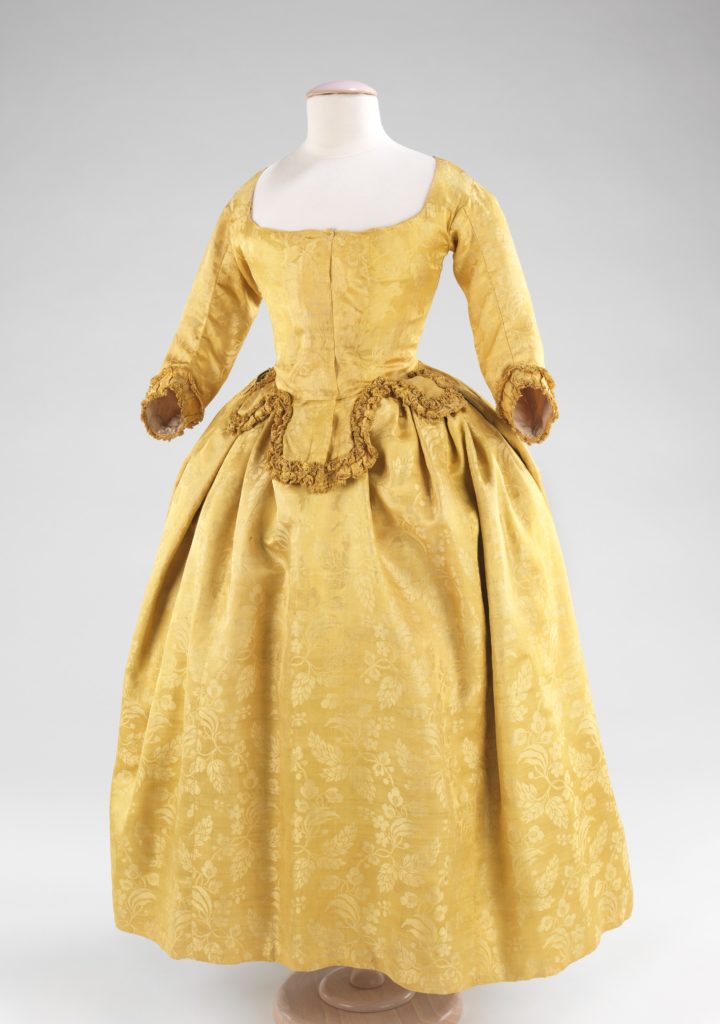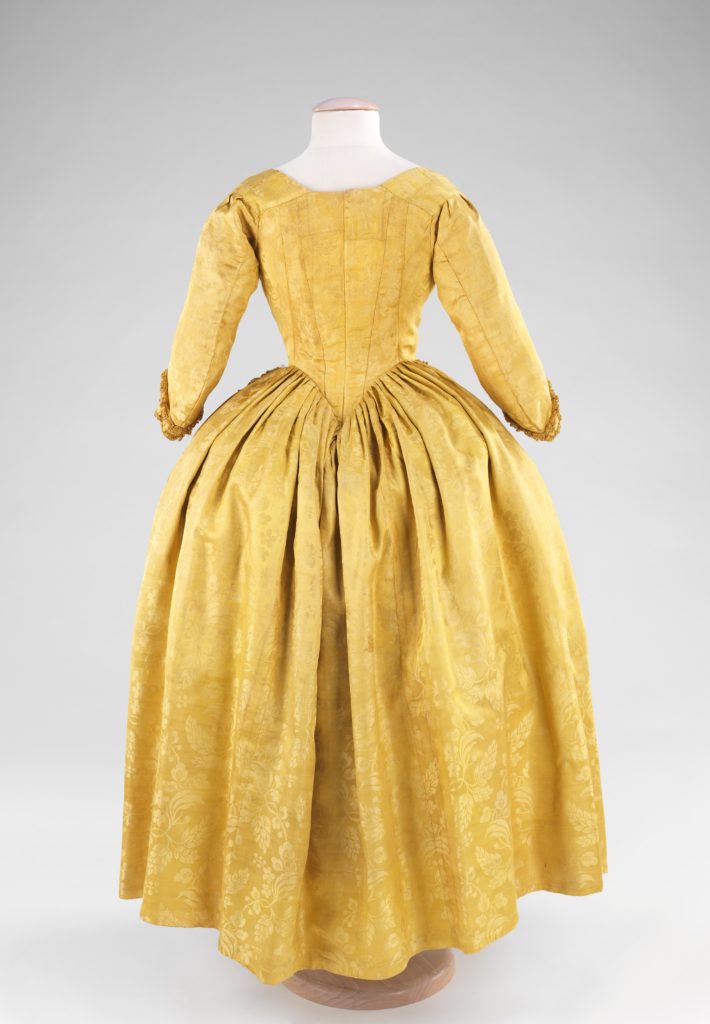
https://www.metmuseum.org/art/collection/search/156045
This elegant yellow dress was worn by a young girl in the eighteenth century.
Where and when was the dress made?
The Metropolitan Museum of Art tells us that this dress was made between 1775 and 1785 in Great Britain. That is very useful information for studying it, and helps us consider the world this girl lived in. For example, we know that the British monarch during those years was King George III. In addition, the American Revolutionary War was fought from 1775 to 1783. I imagine the war was very likely on the wearer’s mind, and could have directly affected her family.
How old was the girl who wore this dress?
In the eighteenth century, there was no difference between the clothing of very young boys and girls. Infants were swaddled and babies were dressed in loose, lightweight dresses. Young children of both genders wore dresses and skirts for many years.
Gendered differences appeared in children’s clothing when they reached a certain age. Typically by age seven, boys began to wear breeches and other masculine garments to signal their entry into manhood. However, girls of the same age remained wearing children’s clothes. Only when a girl entered her early teens would she begin wearing similar garments to adult women. Based on that information, we can gather that this yellow dress was most likely worn by a teenaged girl, because it closely resembles styles worn by adults.
How was the dress made?
Two fashionable dress styles during the 1770s were the French robe à la française and British robe à l’Anglaise. However, those styles were going out of fashion by the 1780s.
This yellow dress is an example of the Italian-style gown which first appeared in the 1770s. Although the fitted back of this gown resembles the robe à l’Anglaise, its skirt construction is what sets it apart. The skirt is constructed separately, and then attached to the bodice in a characteristic point. The Italian gown persisted in fashionability throughout the 1780s and even the 1790s. For more information about the construction of a 1775 Italian gown, you can check out this post by Kenna Libes.
Although the dress would have been worn for informal occasions, the yellow silk damask fabric would have been very expensive. I imagine it was likely produced in Spitalfields, an area near London which was known for manufacturing luxurious dress silks. Based on the quality of the silk, it’s safe to assume that the wearer’s family had enough money to live comfortably.

https://www.metmuseum.org/art/collection/search/156045
An interesting fact about this girl’s dress is that it was used in The American Duchess Guide to 18th Century Dressmaking as an example of “piecing.” Textiles were so valuable in the eighteenth century that sometimes fabric scraps were fit together like a puzzle. It’s difficult to notice from afar, but looking closely you’ll notice two faint horizontal lines at the center back. Those stitches are evidence of piecing, which was a very normal occurrence in eighteenth-century dress-making!
This dress offers a glimpse into the life of an unknown girl living in the eighteenth century. While we don’t know her name and can’t see her face, we can imagine her moving through her world in this fashionable yellow dress.
-Summer Lee
Junior Girl
Girl Museum Inc.

Very informative and well written article.
Great article! Beautiful dress. I love the fact that the dress was most likely made via piecing.